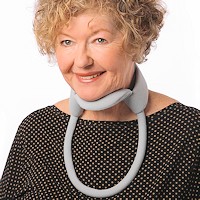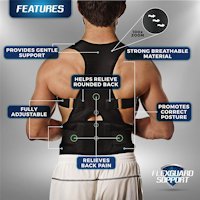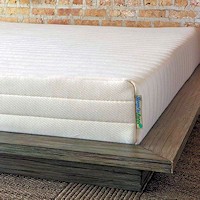Tension Neck Syndrome Is Neck Pain And Stiffness With Tenderness Of The Trapezius Muscle.
Tension neck syndrome often causes fatigue, stiffness in the neck, neck pain or a headache pain from the neck. There are at least 2 tender areas or small, hard nodules, sometimes called trigger points. Often called neck tension or cervicobrachial syndrome, and sometimes mixed with trapezius myalgia.
What Does Tension Neck Syndrome Mean?
 It is perhaps a difficult term and may encompass a variety of named disorders or syndromes involving the neck and shoulder areas, collectively called “cervicobrachial” – cervico (neck) and brachial (shoulder or arm).
It is perhaps a difficult term and may encompass a variety of named disorders or syndromes involving the neck and shoulder areas, collectively called “cervicobrachial” – cervico (neck) and brachial (shoulder or arm).
Some of these names you might recognize like, trapezius myalgia, muscular rheumatism, posture related neck pain, tension myalgia, fibrositis, myofascial syndrome or cervical strain.
While these are somewhat vague terms, they describe and element of neck and shoulder pain (cervicobrachial) due to a muscular (myalgia) component and are responsible for much work loss. It is common among office and factory workers that experience mental stress along with motions requiring repetition or poor postures for prolonged periods. The names seem almost endless, occupational myalgia, occupational cervicobrachial disorder or even one of my favorites, “tech neck“.
So, this syndrome involves the sensation of neck and shoulder pain, with objective signs of tender and stiff muscles, sensitive, hard areas in the muscles felt as tight bands or nodules, and spasms. These sensitive areas in the muscles called trigger points can cause pain and numbness or tingling to radiate to more distant regions of the head, neck shoulders and upper back, but are not related to pinched nerves. The nature of these strained muscles can produce unusual sensations related to the nervous system and have been thought by some to be a psychological reaction, leading to somewhat disturbing descriptions like “occupational neurosis” or “psychogenic rheumatism”.
Symptoms of Tension Neck Syndrome:
- Aching where the neck and shoulders connect
- Pain may be only on one side of the neck, shoulder and/or upper arm (cervicobrachial) area
- Tension type muscular headaches
- Muscular spasms in the neck that come and go
- Dull type pain may travel into the arm and hand
So, What Is Tension Neck Syndrome?
Well, I wish it were simple to answer, however, it seems to be an attempt to get specific about what is really a non-specific neck pain, so lets get a little more detailed before we discuss what to do about it.
There is really no major diagnostic criteria, as it entails vague pain of muscular origin in and about the neck and shoulder girdle. We can get technical and describe it as “tension myalgia of the cervicobrachial region”, which means muscle pain (myalgia) of the neck, shoulder and arm (cervicobrachial) areas.
What Causes Tension Syndrome
If we can rule out that muscle pain (myalgia) is caused by obvious injuries, disc herniation, an infection or inflammatory/degenerative type diseases, we get a “syndrome” often seen with jobs like office workers, cashiers, assembly line workers and packers described by its location as a cervicobrachial syndrome or disorder, sometimes called “primary tension myalgia”. This encompasses muscle problems related to fatigue, overworking, long term sustained postures, immobility, chilling, strain, as well as psychological factors such as emotional stress and depression.
Tension neck syndrome may well be a combination of muscle and mental factors. Muscle factors relate to repetitive motions at high speeds with fingers, wrists and arm motions, which can be repeated hundreds, if not thousands of times every work. Unusual as well as stationary postures using the arms with raised elbows and/or shoulders along with heavy workloads can cause these muscle problems. Mental stress like monotonous working conditions, the need for intense concentration and high levels of pressure, add in poor lighting and noise, and you have a combination of working conditions that can cause this tension syndrome in the neck.
Working with the arms raised in over the head positions may cause neck tension & shoulder/arm muscle fatigue. This is common amongst HVAC workers, electricians, ceiling installers, painters, mechanics and various others professions. We often see strain of the trapezius, deltoid, and supraspinous muscles. One solution for the resulting neck pain is using the Neck Guard Support.
The cause of this syndrome remains somewhat obscure. A common theory is that it is caused by a sustained contraction of muscle groups in a stationary position, which produces an accumulation of waste products and/or lack of blood circulation, which results in long term and persistent (chronic) muscular fatigue and muscle pain.
Other Related Factors
 It is related to both physical and psychological factors. Using a computer mouse is related to increases in the risks for neck pain as well as shoulder pain, and may be associated. A study found the risk for tension neck syndrome for those who use a mouse over 25 hours per week was four times greater than those with minor or no use. Another study found women at risk for tension syndrome in the neck with computer work about 4 hours per day.
It is related to both physical and psychological factors. Using a computer mouse is related to increases in the risks for neck pain as well as shoulder pain, and may be associated. A study found the risk for tension neck syndrome for those who use a mouse over 25 hours per week was four times greater than those with minor or no use. Another study found women at risk for tension syndrome in the neck with computer work about 4 hours per day.
The work related factor of neck pain and computers is affected by the work station lay out and working technique, especially for women. A study found an association involving individuals with limited rest breaks (overworked muscles), in those who had the keyboard too high in relation to their elbow (overstrained muscles with lack of forearm support), and subjects who wore bifocal glasses (altered posture or repetitive motions).
Common Causes for Neck Tension Syndrome:
- Unsupported seating and forward leaning for long periods
- Computer monitor height not at eye level and/or too far to the side
- Holding a phone between the neck and shoulder.
- Poor chair back support
- Using a keyboard with unsupported elbows and forearms
- Repeated head tilting to look at documents
Common Solutions:
- Take breaks every 30 to 40 minutes to stretch neck muscles, do neck lengthening exercises or simple posture improving neck exercises
- Make use of an ergonomic computer set-up or an adjustable monitor stand for proper height
- Have a good document stand to keep the neck in a neutral posture when referring to documents
- Have a chair with a high enough chair back that provides good support for the spine and does not push the shoulders forward when sitting
- Use a headset when using a phone
So, if you have been told you have tension neck syndrome, you may now have a better understanding of what it is and some solutions to help. Don’t forget there is a psychological component to this and try to find ways to reduce stress at work and at home.
A 2020 report in CellPress Journal Heliyon indicates cervicobrachial pain is assumed to be nerve related, however, studies indicate over 80% is not. The authors relate the cause to involvement of the cervical fascia, the covering of the muscles, which can lead to musculoskeletal pain and tension.
A 2021 study in Annals of Work Exposures and Health suggest reducing arm velocity at work can reduce symptoms by 22% for those doing repetitive motions.
 Neck Traction Devices
Neck Traction Devices Cervical Pillows
Cervical Pillows Neck Support Collars
Neck Support Collars Muscle Therapy Tools
Muscle Therapy Tools Head Supports
Head Supports Topical Pain Relievers
Topical Pain Relievers Special Pillows
Special Pillows Heat Therapy
Heat Therapy Cold Therapy
Cold Therapy TENS Therapy
TENS Therapy Posture Braces
Posture Braces Neck Stabilization
Neck Stabilization Ergonomic Aids
Ergonomic Aids New Mattresses
New Mattresses Relief Supplements
Relief Supplements